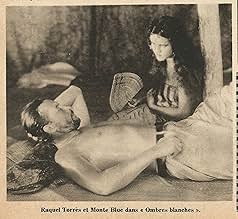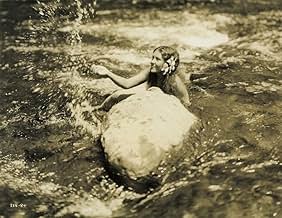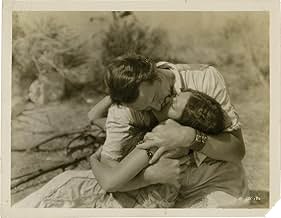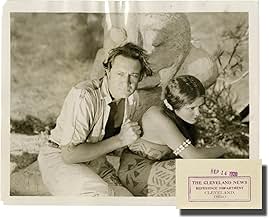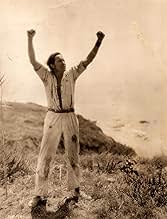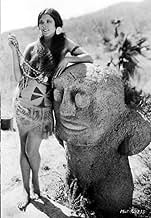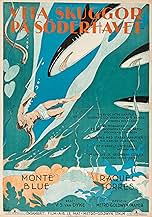NOTE IMDb
6,8/10
1,1 k
MA NOTE
Ajouter une intrigue dans votre langueAn alcoholic doctor on a Polynesian island, disgusted by white exploitation of the natives, finds himself marooned on a pristinely beautiful island.An alcoholic doctor on a Polynesian island, disgusted by white exploitation of the natives, finds himself marooned on a pristinely beautiful island.An alcoholic doctor on a Polynesian island, disgusted by white exploitation of the natives, finds himself marooned on a pristinely beautiful island.
- Réalisation
- Scénario
- Casting principal
- Récompensé par 1 Oscar
- 1 victoire au total
Robert Anderson
- Sebastian - a Trader
- (non crédité)
Renee Bush
- Lucy
- (non crédité)
Dorothy Janis
- Native Girl
- (non crédité)
Napua
- Native Boy
- (non crédité)
Avis à la une
Spreading from island to island, the WHITE SHADOWS IN THE SOUTH SEAS corrupt every culture they encounter.
This unfortunately obscure film, produced by MGM right at the cusp when the Silent Era was giving way to Sound, is a fascinating look at the vanishing way of life to be found in the South Pacific Islands. Its beautiful, vivid photography justly won the Oscar for Best Cinematography.
This 'Camera Record' was directed by W.S. Van Dyke, the Studio's on-location master. The film's prologue states "Produced and photographed on the natural locations and with the ancient native tribes of the Marquesas Islands in the South Seas." The footage depicting the pearl divers and the coconut tree climbers is particularly noteworthy.
Monte Blue gives a very fine performance as a derelict doctor who finds himself acclaimed as a white god on an island of gentle, friendly natives. His despair at the arrival of brutish Caucasian traders in this idyllic paradise is riveting. Mexican actress Raquel Torres, in her film debut, is poignant as the island maiden who captures Blue's heart.
This unfortunately obscure film, produced by MGM right at the cusp when the Silent Era was giving way to Sound, is a fascinating look at the vanishing way of life to be found in the South Pacific Islands. Its beautiful, vivid photography justly won the Oscar for Best Cinematography.
This 'Camera Record' was directed by W.S. Van Dyke, the Studio's on-location master. The film's prologue states "Produced and photographed on the natural locations and with the ancient native tribes of the Marquesas Islands in the South Seas." The footage depicting the pearl divers and the coconut tree climbers is particularly noteworthy.
Monte Blue gives a very fine performance as a derelict doctor who finds himself acclaimed as a white god on an island of gentle, friendly natives. His despair at the arrival of brutish Caucasian traders in this idyllic paradise is riveting. Mexican actress Raquel Torres, in her film debut, is poignant as the island maiden who captures Blue's heart.
Monte Blue stars as Doc Lloyd, a drunk living like a bum among the French Polynesian natives who are being exploited by white traders for the nearby valuable pearl beds. The mistreatment of the locals reaches a breaking point for Doc, and after a violent outburst, he ends up on another island, this one untouched by white man's hands. Here Doc cleans up his act, helping the natives with his medical savvy, and falling in love with native girl Fayaway (Raquel Torres).
The Tahitian shores are nice to look at, and the underwater sequences are intriguing for the time. Director W. S. Van Dyke keeps things moving, but this works more as a travelogue than a compelling narrative. A scene where native fishermen wrestle with giant sea turtles is a highlight, even if you sympathize more with the turtles. This won an Oscar for Best Cinematography, but not until 1930.
The Tahitian shores are nice to look at, and the underwater sequences are intriguing for the time. Director W. S. Van Dyke keeps things moving, but this works more as a travelogue than a compelling narrative. A scene where native fishermen wrestle with giant sea turtles is a highlight, even if you sympathize more with the turtles. This won an Oscar for Best Cinematography, but not until 1930.
In this little-known Van Dyke picture, the brilliant cinematography and acting cancel out the shallow plot and seemingly endless 'docu-footage' of the island. What it all adds up to is a very interesting, beautifully shot representation of an exotic place, with a bit of heavy-handed message to make it a story rather than a documentary. There is one exception to this, though, and it is a stunning one: the scene in which the 'white god' teaches the girl to whistle. It is surprisingly intimate, and acted wonderfully well. I recommend this one to fans of early cinematography.
How nice is it to see this treatment, this attitude, of the white man's imperialism towards native cultures in the 19th century, especially when other movies from this time period often had such blatant or casual racism. Here we clearly see the white man as the bad guy, greedy for pearls, exploiting the Polynesians, and spreading disease. It may be over the top and idealized at times, with some non-factual bits such as attacking octopi and grand proclamations against the white race as a whole, but its heart was certainly in the right place, and this notion of which party was evil was certainly correct.
Filmed on location in the Marquesas (or perhaps in reality Tahiti), it shows beautiful footage of the islands as well as the culture, such as people dancing, scaling coconut trees, shaving breadfruit, diving, fishing, and making fire. I'm not an expert but it feels authentic, and without a doubt, it's certainly respectful of the indigenous people. Director W.S. Van Dyke ("One Take Woody", who would go on to an Oscar nomination for "The Thin Man") pulls all the right strings here, from a fantastic typhoon scene, to intimate moments between leading man Monte Blue, and an island woman played by Raquel Torres. Most of the rest of the cast consists of real Islanders. Cinematographer Clyde De Vinna was worthy of the Oscar he won for the visual treats he gives us throughout the movie, and we also get a few bits of sound on MGM's first film with a pre-recorded soundtrack. What a hidden gem this film is for 1928.
Filmed on location in the Marquesas (or perhaps in reality Tahiti), it shows beautiful footage of the islands as well as the culture, such as people dancing, scaling coconut trees, shaving breadfruit, diving, fishing, and making fire. I'm not an expert but it feels authentic, and without a doubt, it's certainly respectful of the indigenous people. Director W.S. Van Dyke ("One Take Woody", who would go on to an Oscar nomination for "The Thin Man") pulls all the right strings here, from a fantastic typhoon scene, to intimate moments between leading man Monte Blue, and an island woman played by Raquel Torres. Most of the rest of the cast consists of real Islanders. Cinematographer Clyde De Vinna was worthy of the Oscar he won for the visual treats he gives us throughout the movie, and we also get a few bits of sound on MGM's first film with a pre-recorded soundtrack. What a hidden gem this film is for 1928.
This movie, which is part silent and part talkie, is a tale of one man's disintegration, his actions which help to destroy an entire culture and his growing horror at what he has helped to bring about. The movie is still quite effective even now, more than 70 years later, largely because its concerns have probably been part and parcel with humanity's existence since we stopped being nomads and started building cities-greed, the struggle for control, the individual penchant for being your own worst enemy at times. A most memorable and compelling film, the cinematography is beautiful (it justifiably won an Oscar) and the film is one you will remember for a long while.
Le saviez-vous
- AnecdotesAfter completing filming on the tropical island, they returned to the MGM lot at Culver City, where W.S. Van Dyke shot some additional material, including a typhoon at sea and a shipwreck. Then the studio decided to make Ombres blanches (1928) their first sound film, so they added a synchronized soundtrack consisted of a romantic score by William Axt and David Mendoza, with a few sound effects such as wind howling, a storm, trees ruffling and the words "Hello" and "wait."
This was MGM's first sound picture, and it premiered in Hollywood at Sid Grauman's Chinese Theater on Friday, 3 Aug 1928. It is known for being the first MGM film to be released with a pre-recorded soundtrack.
- GaffesThe drowned young man's left arm moves by itself.
- Citations
Dr. Matthew Lloyd: For God's sake, go away, Sebastian... these people are like birds... like flowers... they are like man was before he lost the Garden of Eden...
- Versions alternativesThere is an Italian edition of this film on DVD, distributed by DNA srl, "L'UOMO DI ARAN (1934), NANUK L'ESCHIMESE (1922), OMBRE BIANCHE NEI MARI DEL SUD (1928)" (3 Films on a single DVD), re-edited with the contribution of film historian Riccardo Cusin. This version is also available for streaming on some platforms.
- ConnexionsFeatured in Settling the Score (2005)
- Bandes originalesFlower of Love
(1928) (uncredited)
Music by William Axt and David Mendoza
Lyrics by Dave Dreyer and Herman Ruby
Meilleurs choix
Connectez-vous pour évaluer et suivre la liste de favoris afin de recevoir des recommandations personnalisées
- How long is White Shadows in the South Seas?Alimenté par Alexa
Détails
- Date de sortie
- Pays d’origine
- Langue
- Aussi connu sous le nom de
- White Shadows in the South Seas
- Lieux de tournage
- Sociétés de production
- Voir plus de crédits d'entreprise sur IMDbPro
Box-office
- Budget
- 365 000 $US (estimé)
- Durée
- 1h 28min(88 min)
- Mixage
- Rapport de forme
- 1.20 : 1
Contribuer à cette page
Suggérer une modification ou ajouter du contenu manquant

